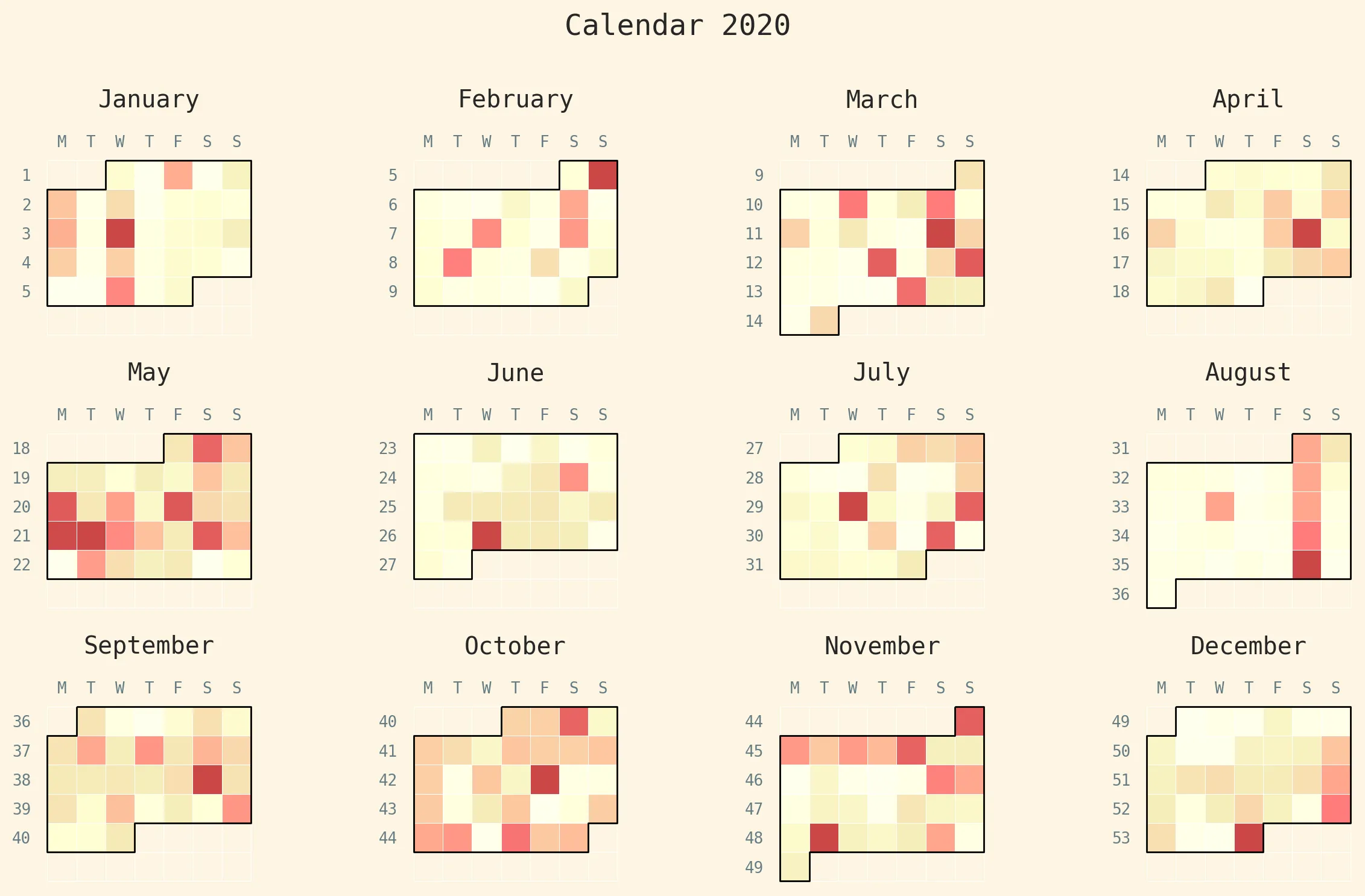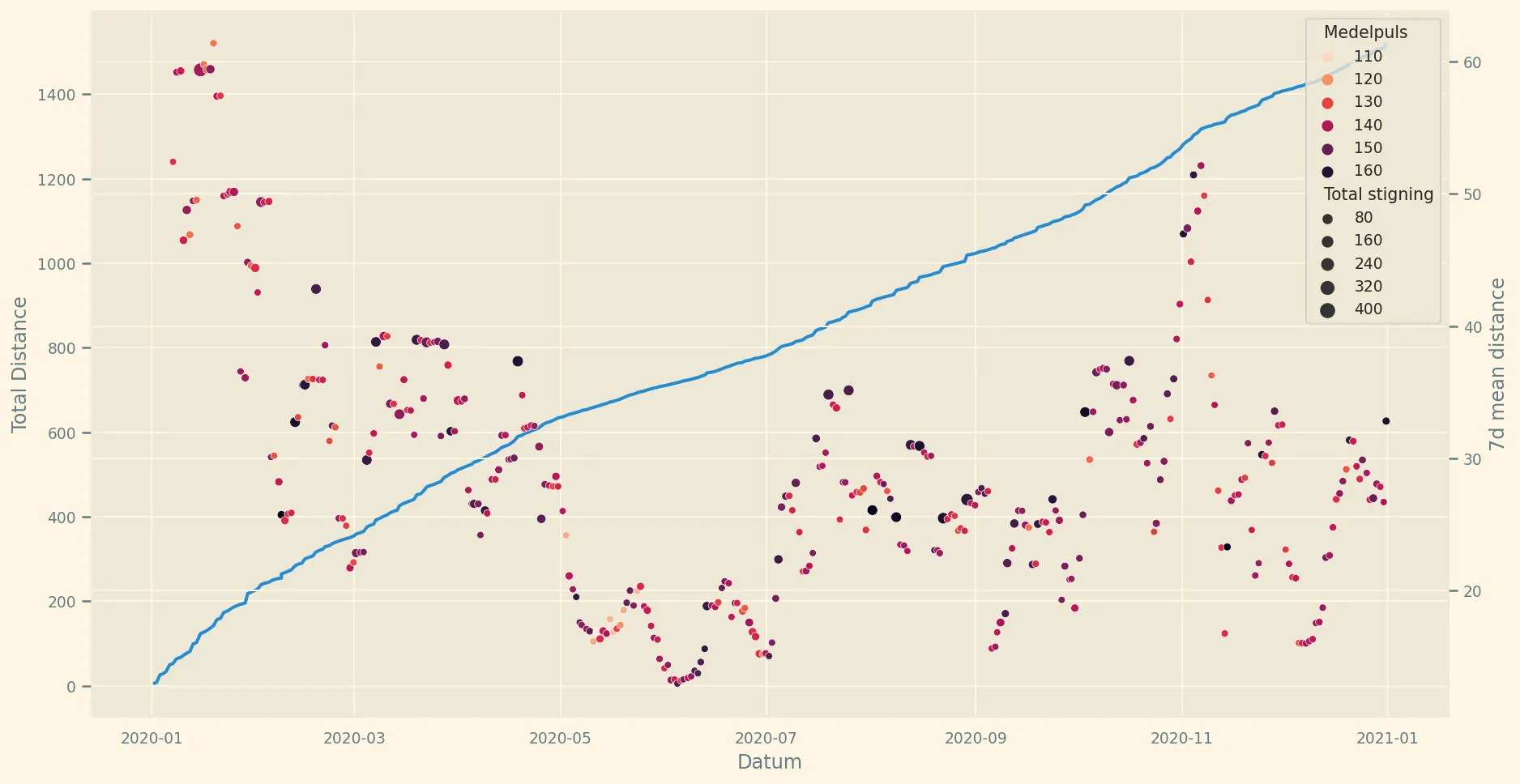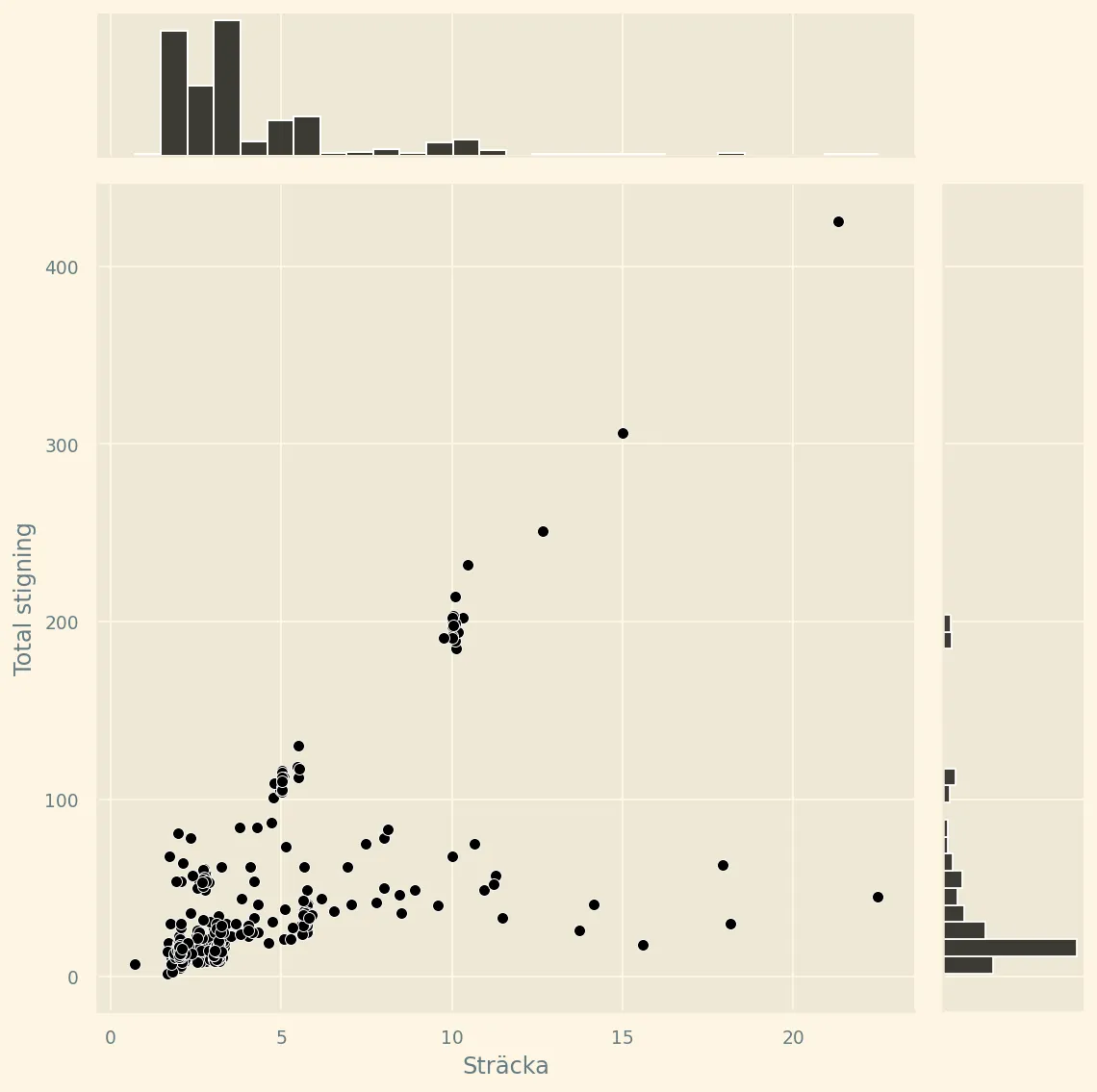365 Days of Running Every Day
People usually fall into two camps when it comes to running: they either love it or dread it — though there’s a small group of in-betweeners hanging on the fence. Those who turn running into a habit often find themselves in the love camp, while those who quit early tend to struggle getting back and eventually grow to dislike it. So, what’s the secret to becoming a runner for life?
Background
Growing up, I played Floorball—a fast-paced indoor team sport that’s huge in Sweden. Think hockey, but with a plastic stick chasing a hollow ball on a gym floor. You sprint in short bursts, rest on the bench, then jump back in. It’s fun, but not exactly an endurance workout.

After years of Floorball, I shifted my focus to strength training and trail running. I loved lifting weights because the progress was quick and tangible—probably thanks to teenage hormones! My mom, a dedicated runner herself, advised me to vary my training and run a few times a week to stay healthy. I followed that advice sporadically, mostly running in spring, summer, and autumn, but never in winter or bad weather. My runs were usually warm-ups before hitting the gym, so I never really built endurance or aerobic fitness.
In short, I never had a solid running habit. I’d have bursts of consistency, but they rarely lasted more than a few months. It wasn’t until I hit 30 that I truly fell in love with running and wanted to make it a lasting part of my life.
Challenge: Become a Consistent Runner
Two years ago, I challenged myself to avoid refined sugars for a whole year. It was tough at first, but I quickly realized it wasn’t as hard as I’d imagined. That success inspired me to push myself further.
So, for 2020, I set myself a crazy, slightly terrifying goal: run every single day for an entire year. No exceptions! I was a mix of nervous and excited. Could I do it without getting injured? Would I find the motivation to get outside every day, regardless of weather, location, or how I felt the day before?
This was a true stretch goal—intentionally difficult but deeply rewarding.
Running Plan — Keep It Simple
My main goal was consistency. I wanted to build a habit without overcomplicating things. So I set a few simple rules:
- Run outside every day—no treadmills allowed.
- Track and log every run with a GPS device.
I used my Garmin watch’s “Garmin Coach” feature, which offers tailored training plans. I couldn’t input my exact challenge criteria, but I chose a 10k program for inspiration. Beyond that, I planned and coached myself.
Fast Forward 365 Days of Running…
What a year 2020 was! Stressful, strange, and unlike any other. The COVID-19 pandemic made me realize how much I have to be grateful for.
At first, I worried whether I could finish the challenge, especially if I caught the virus. But as the year went on and so many people got sick or worse, the challenge became less about achievement and more about gratitude. Every healthy morning was a gift—and an opportunity to run. That mindset motivated me in ways I never expected.

I started the year running way too much. Following Garmin Coach was fun—I loved learning about different training runs. But I ignored my body’s signals. Averaging 60 km per week was too much, and by April, my legs were done. An injury to my right Soleus muscle forced me to cut back.

Getting injured so early felt like failure. Every step hurt, and running stopped being fun. Instead of exploring new routes, I was stuck on the same short loop through May and June—just doing enough to check the box.
To heal, I got new shoes—Altra Torin, which my research said would aid recovery—and saw a physical therapist. The shoes, reduced mileage, and daily rehab exercises helped my Soleus heal. But my confidence took a hit.

I’m bummed I couldn’t run more over summer, but then I reminded myself: distance, pace, or performance were never the point. The challenge was simply to run every day and mark it on the calendar. No more, no less.
Looking back, despite the injury and setbacks, I succeeded.

This chart shows all my 2020 runs. The blue line tracks cumulative distance; the dots show 7-day averages of distance, heart rate, and elevation. I ran 1,521 km and climbed 15,257 vertical meters. The longest run was three hours.
The data tells the story: a strong start, a dip in May and June due to injury, and mostly short runs around 3 km lasting about 19 minutes.
Overall, I’m proud. I completed the challenge, rediscovered my love for running, and learned a lot about listening to my body.
Running might start as a chore or a struggle, but in my experience, you always feel better after a run. Imagine if we could bottle all those benefits into a pill!
Double or Nothing?
Running every day taught me more than I expected. Committing to something challenging and sticking with it revealed new sides of myself. Honestly, just being outdoors daily is enough to make it worthwhile. And that daily sense of accomplishment—even if small—is incredibly rewarding.
Most of my challenges last a year, but I’m not done. I plan to run every day for another year. I learned there’s a whole community doing this too—they call it a Runstreak. Not my thing, but I respect it.

Looking at my 2020 running stats, I see a lack of variety and mostly flat terrain. Next year, I want to hit the trails more, seek varied and elevated routes. Nature offers mental benefits, and varied terrain helps prevent injury by spreading the load across different muscles.
My best memories come from running in Jämtland county, Sweden. If only every run could feel that memorable.

Next year’s challenge has a performance goal: increase weekly mileage to average 5 km per day.
I’ve learned to change shoes more often and truly listen to my body. Shoes lose cushioning over time, which strains the body. I’ll also need to eat more and prioritize restorative sleep.
The key word for next year is “variation.” It keeps running healthy and exciting. I’ll add more stretching and, above all, keep enjoying the run.
Running every day changed how I see myself and what I’m capable of. It taught me patience, resilience, and the power of small daily wins. Whether you’re a seasoned runner or just starting out, I hope my story inspires you to find your own rhythm and joy in movement.
Remember: it’s not about speed or distance, but the simple act of showing up. Lace up, step outside, and discover what running can do for you. Your future self will thank you.